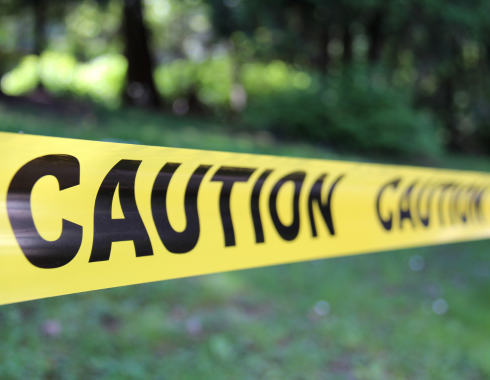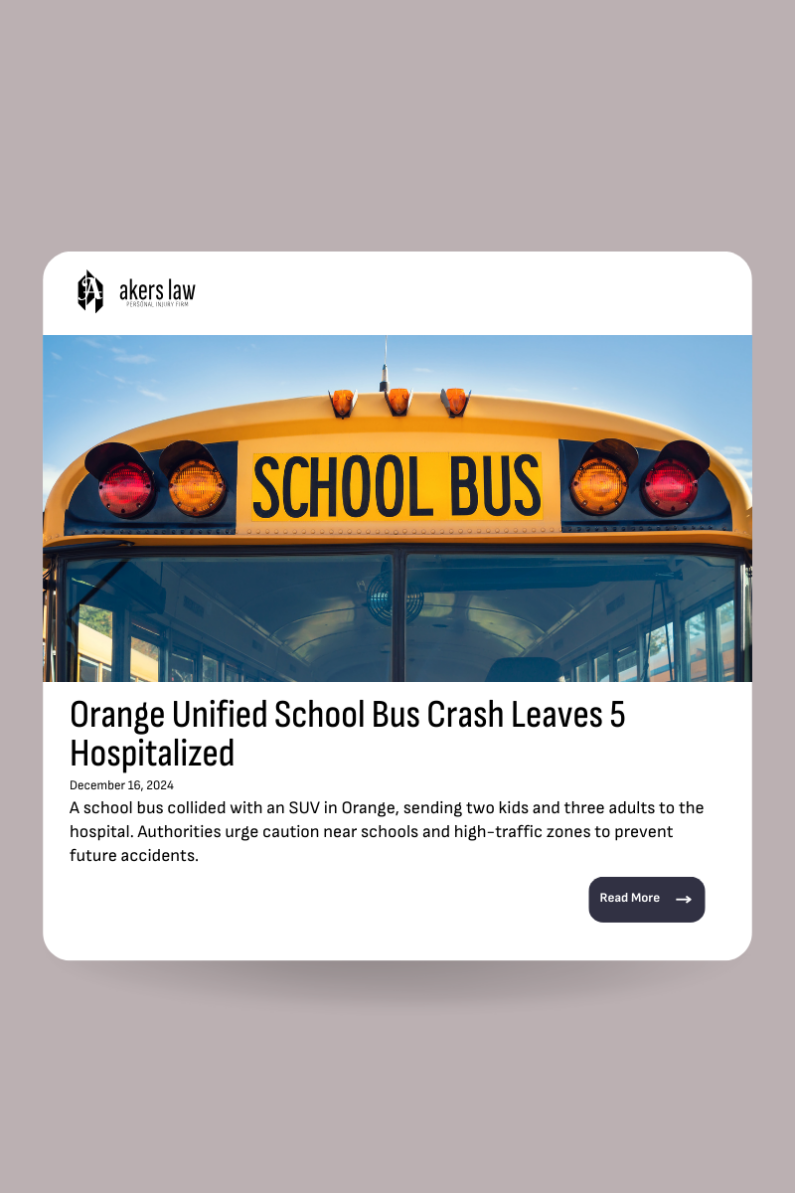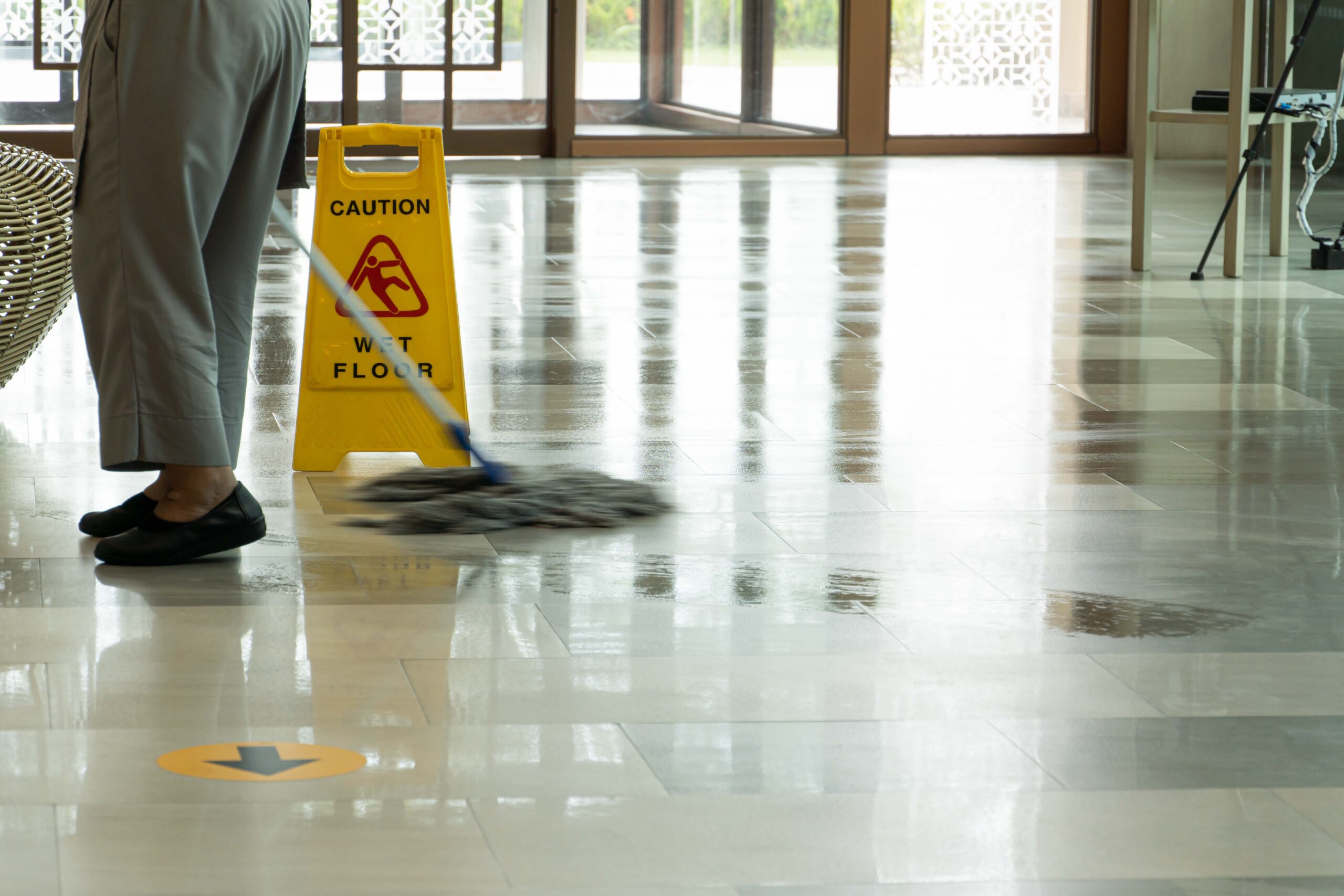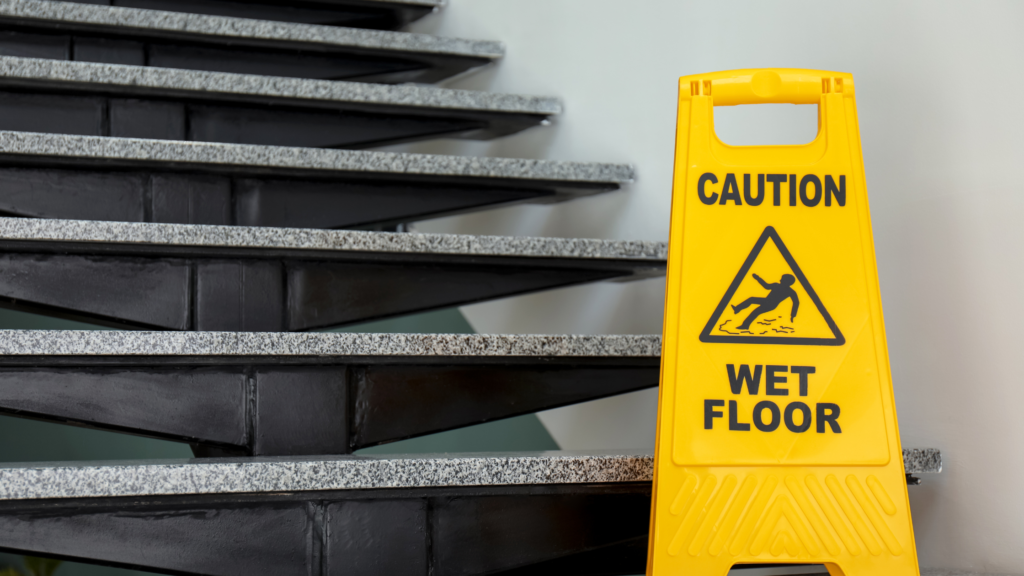
Slip and fall accidents are more common than one might think and can happen in various settings, from grocery stores and shopping malls to sidewalks and workplaces. When such accidents occur, it’s natural to wonder who bears the responsibility for the resulting injuries and damages. This blog post aims to shed light on the concept of liability in slip and fall accidents, exploring the factors that determine responsibility and the steps to take if you find yourself in such a situation.
Understanding Liability in Slip and Fall Accidents
Liability in slip and fall accidents typically revolves around the concept of negligence. Negligence refers to a failure to exercise reasonable care, leading to harm or injury to another person. In the context of slip and fall accidents, determining liability involves assessing whether the property owner or occupier acted negligently in maintaining their premises.
Key Factors in Determining Responsibility:
- Property Owner’s Duty of Care: Property owners have a legal obligation to maintain their premises in a reasonably safe condition. This includes promptly addressing hazards, such as wet floors, uneven surfaces, or other dangerous conditions that could lead to a slip and fall.
- Visitor’s Status: Visitors are categorized into three groups: invitees, licensees, and trespassers. The property owner’s level of responsibility varies depending on the visitor’s status. Invitees (customers or clients) receive the highest level of protection, followed by licensees (social guests), while property owners owe minimal duty to trespassers.
- Knowledge of Hazard: Liability often hinges on whether the property owner was aware of the hazard or should have been aware of it. If they knew about the danger and failed to rectify it, they may be held responsible.
Steps to Take After a Slip and Fall Accident:
- Seek Medical Attention: Your health and safety are top priorities. If you’re injured, seek medical help immediately.
- Document the Scene: If possible, take photos or videos of the accident scene, including the hazard that caused the fall. Document any visible injuries, such as bruises, cuts, or swelling. This visual evidence can be crucial when determining liability and damages.
- Report the Incident: If the accident occurs on someone else’s property, report the incident to the property owner, manager, or staff. Ask for a copy of the incident report. Most of the time, a copy will not be offered to you — you need to ask for it.
- Gather Witness Information: If there were witnesses to the accident, collect their contact information. Their testimonies can provide valuable support when establishing the circumstances of the fall.
- Preserve Evidence: Keep the clothing and shoes you were wearing at the time of the accident, as well as any medical records and bills related to your injuries.
- Consult an Attorney: If you believe negligence played a role in the accident, consider consulting a personal injury attorney. They can help assess the situation, explain your rights, and guide you through the legal process. It is crucial to contact an attorney right away, as the longer you wait, the more likely it is that evidence, such as videos of the incident, may be lost or destroyed.
If you’ve suffered injuries due to a slip and fall, it’s important to understand your rights and take appropriate actions to protect yourself. Seeking legal advice can provide clarity on whether you have a valid claim and how to proceed to seek compensation for your damages. Remember, holding responsible parties accountable not only ensures your well-being but also contributes to safer premises for everyone.
Slip and Fall Accidents in California
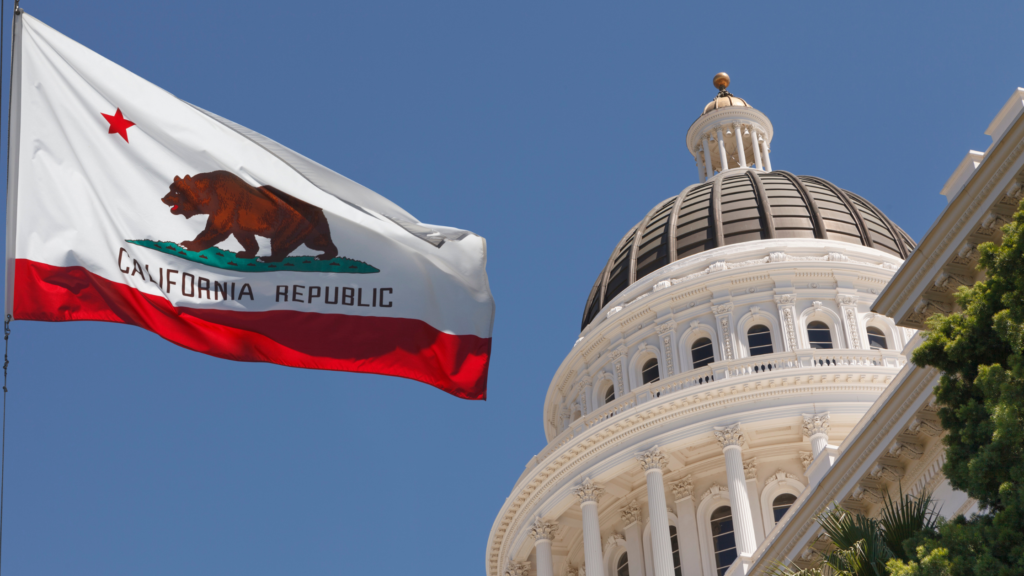
The general principles of liability in slip and fall accidents are similar across jurisdictions, including California. However, specific laws and regulations can vary from state to state. Here’s how these concepts may apply specifically in California:
- Property Owner’s Duty of Care: In California, property owners owe a duty of care to maintain their premises in a safe condition for visitors. This duty extends to both invitees (those who are invited onto the property for business purposes) and licensees (social guests). Property owners are required to address hazards and dangerous conditions promptly.
- Visitor’s Status: California also categorizes visitors into invitees, licensees, and trespassers. Property owners owe the highest duty of care to invitees, followed by a lesser duty to licensees. While the duty to trespassers is not as high, property owners are still generally prohibited from intentionally causing harm to trespassers.
- Knowledge of Hazard: California follows a rule known as “constructive knowledge,” which means that property owners may be held liable for hazards they should have known about through reasonable inspections. If a hazardous condition is present for a sufficient amount of time, the property owner should have discovered it and taken corrective action.
- Comparative Negligence: California applies the doctrine of comparative negligence in personal injury cases, including slip and fall accidents. If the injured person’s own negligence contributed to the accident, their compensation may be reduced based on their percentage of fault. California Civil Code Section 1714: This section of the California Civil Code outlines the general principles of negligence and liability for injuries caused by someone’s negligence.
- Statute of Limitations: California has a statute of limitations that sets a time limit on when you can file a personal injury lawsuit after a slip and fall accident. Typically, you have two years from the date of the accident to file a lawsuit.
- Premises Liability Laws: California’s premises liability laws require property owners to take reasonable steps to prevent accidents and injuries on their premises. This includes maintaining safe conditions, warning visitors about known hazards, and addressing dangerous conditions promptly.
- California Department of Industrial Relations – Workers’ Compensation: If a slip and fall accident occurs at the workplace, this resource provides information on workers’ compensation laws and procedures in California.
It’s important to note that legal interpretations and precedents can change, so it’s advisable to consult with a legal professional who specializes in personal injury law in California if you’re involved in a slip and fall accident in the state. They can provide specific guidance based on the current laws and regulations in California and help you navigate the legal process effectively.
Common Hazards Leading to Slip and Fall Accidents:
Slip and fall accidents can occur in a variety of settings, often as a result of hazardous conditions that property owners should promptly address. Here are examples of common hazards that can lead to slip and fall accidents:
- Wet or Slippery Floors: Floors that are wet due to spills, leaks, or cleaning can become extremely slippery. This is a significant hazard, particularly in places like grocery stores, restaurants, and bathrooms.
- Uneven Surfaces: Uneven or poorly maintained surfaces, such as cracked sidewalks, uneven tiles, or loose floorboards, can easily cause someone to trip and fall.
- Inadequate Lighting: Insufficient lighting can obscure potential hazards, making it difficult for pedestrians to see obstacles in their path. Poorly lit staircases, hallways, and parking lots can be particularly dangerous.
- Cluttered Walkways: Cluttered or obstructed walkways, including items left in aisles, cords or cables across floors, or debris on sidewalks, can lead to trips and falls.
- Icy or Slippery Sidewalks: In colder climates, icy sidewalks and driveways can be treacherous. Failure to promptly remove ice or to provide proper traction can result in slip and fall accidents.
- Lack of Handrails: Staircases without handrails or improperly maintained handrails pose a significant risk, especially for older individuals or those with mobility issues.
- Loose or Worn Carpeting: Carpets that are loose, torn, or worn can create tripping hazards. This is especially common in areas with heavy foot traffic.
- Unmarked Changes in Elevation: Sudden changes in elevation without proper warning, such as steps or ramps without handrails, can catch individuals off guard and lead to falls.
- Wet Leaves or Debris: In outdoor settings, wet leaves, mud, or other debris can make pathways slippery and hazardous, particularly in rainy or inclement weather.
- Spills: Spilled liquids or substances, whether in stores, restaurants, or public spaces, can create slippery surfaces that pose a risk of slipping.
Property Owner Responsibility:
Property owners, whether of commercial establishments, residential buildings, or public spaces, have a legal duty to maintain their premises in a safe condition. This responsibility includes promptly addressing these common hazards to prevent slip and fall accidents. Neglecting to take appropriate measures, such as promptly cleaning up spills, repairing uneven surfaces, providing adequate lighting, and warning visitors about potential dangers, can result in legal liability if an accident occurs. By properly maintaining their properties and promptly addressing hazards, property owners contribute to the safety of visitors and reduce the risk of slip and fall accidents. This responsibility is an essential aspect of providing a safe environment for everyone who enters their premises.
Establishing Negligence in a Slip and Fall Case:
In a slip and fall case, establishing negligence involves proving that the property owner or occupier failed to fulfill their duty of care, resulting in injuries to the victim. This involves several key elements including:
- Duty of Care: Property owners have a legal duty to provide a safe environment for visitors. This duty includes regularly inspecting the premises, identifying hazards, and taking appropriate measures to prevent accidents. The extent of the duty depends on the visitor’s status (invitee, licensee, or trespasser) and the circumstances.
- Breach of Duty: To establish negligence, it must be shown that the property owner breached their duty of care. This means they did not take reasonable steps to prevent or address hazards. A breach might occur if the property owner knew about the hazard but failed to correct it or if they should have known about it through reasonable inspections.
- Causation: It must be demonstrated that the breach of duty directly caused the slip and fall accident. The hazardous condition created by the property owner’s negligence should have been the direct cause of the victim’s injuries.
- Damages: In a negligence claim, the victim must have suffered actual damages, such as physical injuries, medical expenses, pain and suffering, or lost wages. Without provable damages, a negligence claim might not be valid.
Evidence to Prove Negligence:
Collecting and presenting this evidence can significantly strengthen the victim’s case by providing an understanding of the circumstances of the slip and fall accident. Evidence that demonstrates a breach of duty, causation, and resulting damages is crucial for proving negligence and pursuing compensation for the injuries sustained.
The following evidence helps establish the elements mentioned above and strengthens the victim’s claim:
- Photographs and Videos: Visual evidence of the accident scene, such as pictures of the hazard, the surroundings, and any injuries sustained, can provide a clear depiction of the situation at the time of the accident.
- Witness Statements: Statements from witnesses who observed the accident and the hazardous conditions can provide an objective account of what occurred and who was responsible.
- Maintenance Records: Maintenance records, inspection logs, and records of repairs can indicate whether the property owner was aware of the hazard and whether they took reasonable steps to address it.
- Incident Reports: Incident reports filed with the property owner, manager, or staff immediately after the accident can document the occurrence and the conditions that led to the fall.
- Medical Records: Medical records detailing the injuries sustained and the treatment received can establish the link between the accident and the resulting harm.
- Expert Opinions: In some cases, experts, such as engineers or safety professionals, can provide opinions about whether the property owner’s actions constituted negligence.
- Surveillance Footage: If available, surveillance footage from security cameras can provide an unbiased account of how the accident happened.
The Importance of Seeking Immediate Medical Treatment After a Slip and Fall Accident
Seeking immediate medical treatment after a slip and fall accident is not only essential for your physical well-being but also plays a pivotal role in any legal or insurance-related matters that might arise. Remember that health and safety should always be a priority, and seeking professional medical evaluation is a responsible step that can have far-reaching positive consequences. Whether your injuries are immediately evident or not, it’s always best to ensure that your health is properly assessed and treated.
Insurance companies often scrutinize claims, looking for reasons to reduce compensation or deny claims altogether. If you delay seeking medical treatment, they may argue that your injuries are unrelated to the accident or that they have worsened due to your actions after the incident. A medical record created immediately after the accident helps counter such arguments and ensures that your injuries are accurately documented.
Disclaimer: This article is for informational purposes only and should not be considered legal advice. Consult a qualified attorney for advice regarding your individual situation.
The Benefits of Consulting a Personal Injury Attorney After a Slip and Fall Accident
After experiencing a slip and fall accident, the aftermath can be overwhelming, especially when dealing with injuries, medical bills, and potential legal complexities. Consulting a personal injury attorney can provide you with crucial assistance and guidance during this challenging time. Here’s why seeking legal counsel is a wise decision:
- Case Evaluation: Assessing the Strength of Your Case. A skilled personal injury attorney can evaluate the strength of your case objectively. They will review the details of your accident, the evidence available, and your injuries to determine whether you have a viable claim. This assessment helps you understand the potential merits of your case and whether pursuing legal action is in your best interest.
- Negotiation Expertise: Dealing with Insurance Companies. Insurance companies often aim to settle claims for the least amount possible. Personal injury attorneys are adept at negotiating with insurance companies to ensure that you receive fair compensation. Their experience helps prevent undervaluation of your claim, maximizing your chances of receiving the compensation you deserve.
- Legal Expertise: Guiding You Through the Process. Navigating the legal process can be complex, particularly if you’re unfamiliar with the laws and procedures involved. A personal injury attorney guides you through every step, explaining your rights, obligations, and options. They ensure that you meet deadlines, file necessary documents, and adhere to legal requirements, reducing the stress on your shoulders.
- Building a Strong Case: Collecting and Presenting Evidence. Personal injury attorneys have the expertise to gather, organize, and present evidence effectively. This includes obtaining medical records, accident reports, witness statements, and any other relevant information. A well-structured case increases your chances of obtaining a favorable outcome, whether through negotiations or litigation.
- Contingency Fees: Cost-Efficient Legal Representation. Most personal injury attorneys work on a contingency fee basis. This means you won’t have to pay upfront legal fees; instead, the attorney’s fee is a percentage of the compensation you receive. If the attorney doesn’t win your case, you typically don’t owe them anything, making legal representation accessible without immediate financial burden.
- Focus on Recovery: Letting You Heal. Dealing with legal matters while recovering from injuries can be overwhelming. Having a personal injury attorney handle legal aspects allows you to focus on your recovery and well-being, knowing that your case is in capable hands.
Akers Law Firm – Your Trusted Partner in Irvine, CA
If you’ve experienced a slip and fall accident in Irvine, California, seeking expert legal counsel is essential. Akers Law Firm, located in Irvine, CA, specializes in personal injury cases and is committed to providing personalized, dedicated, and compassionate representation. Our experienced attorneys understand the complexities of slip and fall cases and will work tirelessly to secure the compensation you deserve. Contact Akers Law Firm today for a free consultation and let us guide you through the legal process.

